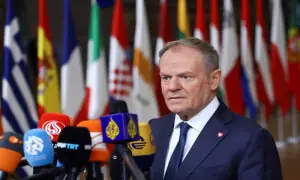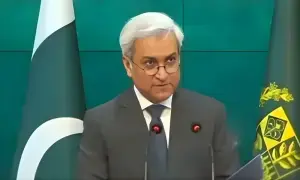North Korea test-fires most powerful missile since 2017
North Korea on Sunday tested its most powerful missile since 2017, ramping up the firepower for its record-breaking seventh launch this month as Seoul warned nuclear and long-range tests could be next.
Pyongyang has never test-fired this many missiles in a calendar month before and last week threatened to abandon an nearly five-year-long self-imposed moratorium on testing long-range and nuclear weapons.
With peace talks with the US stalled, North Korea has doubled-down on leader Kim Jong Un's vow to modernise the regime's armed forces, flexing Pyongyang's military muscles despite biting international sanctions.
South Korea said Sunday that North Korea appeared to be following a "similar pattern" to 2017 -- when tensions were last at breaking-point on the peninsula -- warning Pyongyang could soon restart nuclear and intercontinental missile tests.
North Korea "has come close to destroying the moratorium declaration", South Korea's President Moon Jae-in said in a statement following an emergency meeting of Seoul's National Security Council.
South Korea's military said Sunday it had "detected an intermediate-range ballistic missile fired at a lofted angle eastward towards the East Sea."
A lofted trajectory involves missiles being fired at a high angle instead of out to their full range.
Sunday's ballistic missile was estimated to have hit a maximum altitude of 2,000 kilometers and flown around 800 kilometers for half an hour, Seoul's Joint Chiefs of Staff said.
That indicated that Pyongyang may have tested its "first Intermediate-Range Ballistic Missile (IRBM) since 2017", Joseph Dempsey, an analyst with the International Institute for Strategic Studies, wrote on Twitter.
The last time Pyongyang tested a similar missile was in 2017, when the Hwasong-12 flew 787 kilometers at an apogee of just over 2,111 kilometers.
Analysts said at the time that the trajectory indicated that the missile could have flown around 4,500 km if fired on a range-maximizing ballistic trajectory -- putting the US territory of Guam in range.
Japan's top government spokesman Hirokazu Matsuno said Sunday that the ballistic missile "was one with intermediate-range or longer range."
'Time is ripe'
Pyongyang has tested hypersonic missiles twice this month, as well as carrying out four launches of short-range ballistic and cruise missiles.
Last week, leader Kim was photographed by state media inspecting an "important" munitions factory that produces "a major weapon system".
"Kim has been withholding his appetite for testing and provocations," Soo Kim, an analyst at the RAND Corporation, told AFP.
Now however, "the time is ripe, and North Korea's continued missile firing will only throw another wrench into Washington's already high plate of foreign policy challenges," she added.
The frenzy of missiles was also aimed at reminding the world that "the Kim regime hears external discussions of its domestic weaknesses," said Leif Easley, a professor at Ewha University.
"It wants to remind Washington and Seoul that trying to topple it would be too costly," he added.
The string of launches in 2022 comes at a delicate time in the region, with Kim's sole major ally China set to host the Winter Olympics next month and South Korea gearing up for a presidential election in March.
Domestically, North Korea is preparing to celebrate the 80th anniversary of the birth of late leader Kim Jong Il in February, as well as the 110th birthday of founder Kim Il Sung in April.
With reports of soaring food prices and worsening hunger, an economically-reeling Pyongyang recently restarted cross-border trade with neighbouring China.
And ally Beijing, along with Russia, this month blocked the UN Security Council from imposing fresh sanctions in response to the recent tests.
For the latest news, follow us on Twitter @Aaj_Urdu. We are also on Facebook, Instagram and YouTube.





















Comments are closed on this story.